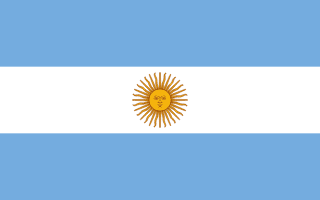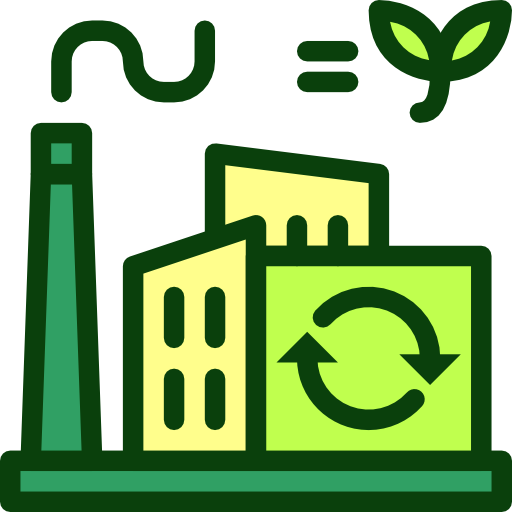Argentina - Geography

Here, let us take a look at the Geography of Argentina. Second-largest country in South America (after Brazil); strategic location relative to sea lanes between the South Atlantic and the South Pacific Oceans (Strait of Magellan, Beagle Channel, Drake Passage); diverse geophysical landscapes range from tropical climates in the north to tundra in the far south; Cerro Aconcagua is the Western Hemisphere's tallest mountain, while Laguna del Carbón is the lowest point in the Western Hemisphere; shares Iguazú Falls, the world's largest waterfalls system, with Brazil. Mother's mean age at first birth is (), whereas, the Maternal mortality ratio is 33 deaths/100,000 live births (2023 est.)
Geographical data of Argentina
| Location | Southern South America, bordering the South Atlantic Ocean, between Chile and Uruguay |
|---|---|
| Geographic coordinates | 34 00 S, 64 00 W |
| Map references | South America |
| Tarrain | rich plains of the Pampas in northern half, flat to rolling plateau of Patagonia in south, rugged Andes along western border |
| Natural Resources | fertile plains of the pampas, lead, zinc, tin, copper, iron ore, manganese, petroleum, uranium, arable land |
| Natural Hazards | San Miguel de Tucumán and Mendoza areas in the Andes subject to earthquakes; pamperos are violent windstorms that can strike the pampas and northeast; heavy flooding in some areas volcanism: volcanic activity in the Andes Mountains along the Chilean border; Copahue (2,997 m) last erupted in 2000; other historically active volcanoes include Llullaillaco, Maipo, Planchón-Peteroa, San José, Tromen, Tupungatito, and Viedma |
| Irrigated Land | 13,910 sq km (2018) |
| Major rivers (by length in km) | Río de la Plata/Paraná river mouth (shared with Brazil [s], Paraguay, and Uruguay) - 4,880 km; Paraguay (shared with Brazil [s], and Paraguay [m]) - 2,549 km; Uruguay (shared with Brazil [s] and Uruguay [m]) - 1,610 km note: [s] after country name indicates river source; [m] after country name indicates river mouth |
| Major aquifers | Guaraní Aquifer System |
| Land Boundaries | 11,968 km |
| Border Countries | Bolivia 942 km; Brazil 1,263 km; Chile 6,691 km; Paraguay 2,531 km; Uruguay 541 km |
| Coastline | 4,989 km |
| Climate | mostly temperate; arid in southeast; subantarctic in southwest |
| Area | |
| Total Area | |
| Land Area | 2,736,690 sq km |
| Water Area | 43,710 sq km |
| comparative Area | slightly less than three-tenths the size of the US |
| Maritime Claims | |
| Territorial sea | 12 nm |
| Contiguous zone | 24 nm |
| Exclusive economic zone | 200 nm |
| Continental shelf | 200 nm or to the edge of the continental margin |
| Elevations | |
| Highest point | Cerro Aconcagua (located in the northwestern corner of the province of Mendoza; highest point in South America) 6,962 m |
| Lowest point | Laguna del Carbón (located between Puerto San Julián and Comandante Luis Piedra Buena in the province of Santa Cruz) -105 m |
| Mean elevation | 595 m |
| Land Use | |
| Agricultural land | 42.4% (2023 est.) |
| Agricultural land: arable land | arable land: 14.8% (2023 est.) |
| Agricultural land: permanent crops | permanent crops: 0.4% (2023 est.) |
| Agricultural land: permanent pasture | permanent pasture: 27.3% (2023 est.) |
| Forest | 17.2% (2023 est.) |
| Other | 40.4% (2023 est.) |
Population Distribution
One third of the population lives in Buenos Aires; pockets of agglomeration occur throughout the northern and central parts of the country; Patagonia to the south remains sparsely populated
People and Society
In Argentina, the different Ethnic groups are such that we have: European (mostly Spanish and Italian descent) and Mestizo (mixed European and Indigenous ancestry) 97.2%, Indigenous 2.4%, African descent 0.4% (2010 est.)
| Population | |
|---|---|
| Pop growth rate | 0.79% (2024 est.) |
| Birth rate | 15.2 births/1,000 population (2024 est.) |
| Death rate | 7.3 deaths/1,000 population (2024 est.) |
| Health expenditure | |
| Physicians Density | |
| Hospital bed Density | 3.3 beds/1,000 population (2021 est.) |
| Total fertility rate | 2.15 children born/woman (2024 est.) |
| Gross reproduction rate | 1.04 (2024 est.) |
| Contraceptive prevalence rate | |
| Est married women (ages 15-49) | 48.9% (2023 est.) |
| Literacy | |
| Education expenditures | |
| Net Migration rate | -0.1 migrant(s)/1,000 population (2024 est.) |
| Nationality | Argentine | Argentine(s) |
| Languages | |
| Religions | Roman Catholic 62.9%, Evangelical 15.3% (Pentecostal 13%, other Evangelical 2.3%), Jehovah's Witness and Church of Jesus Christ 1.4%, other 1.2% (includes Muslim, Jewish), none 18.9% (includes agnostic and atheist), unspecified 0.3% (2019 est.) |
| Age Structure | |
| 0-14 years | 23.3% (male 5,632,983/female 5,301,778) |
| 15-64 years | 63.9% (male 15,071,215/female 14,956,069) |
| 65 years and over | 12.8% (2024 est.) (male 2,570,596/female 3,461,743) |
| Dependency Ratios | |
| Total dependency ratio | 50.9 (2024 est.) |
| Youth dependency ratio | 31.5 (2024 est.) |
| Elderly dependency ratio | 19.4 (2024 est.) |
| Potential support ratio | 5.1 (2024 est.) |
| Median Age | |
| Total | 33.3 years (2024 est.) |
| Male | 32.1 years |
| Female | 34.6 years |
| Urbanization | |
| Urban population | 92.5% of total population (2023) |
| Rate of urbanization | 0.97% annual rate of change (2020-25 est.) |
| Major urban areas (Pop) | 15.490 million BUENOS AIRES (capital), 1.612 million Córdoba, 1.594 million Rosario, 1.226 million Mendoza, 1.027 million San Miguel de Tucumán, 914,000 La Plata (2023). |
| Sex Ratio | |
| At birth | 1.07 male(s)/female |
| 0-14 years | 1.06 male(s)/female |
| 15-64 years | 1.01 male(s)/female |
| 65 years and over | 0.74 male(s)/female |
| Total population | 0.98 male(s)/female (2024 est.) |
| Infant Motality | |
| Total | 9 deaths/1,000 live births (2024 est.) |
| Male | 9.9 deaths/1,000 live births |
| Female | 7.9 deaths/1,000 live births |
| Life Expectancy at birth | |
| Total population | 78.8 years (2024 est.) |
| Male | 75.8 years |
| Female | 82 years |
| Drinking Water Sources | |
| Improved: urban | urban: 99.8% of population (2022 est.) |
| Unimproved: urban | urban: 0.2% of population (2022 est.) |
| Unimproved: total | total: (2020 est.) NA |
| Sanitation facility acess | |
| Improved: urban | urban: 100% of population (2022 est.) |
| Unimproved: urban | urban: 0% of population (2022 est.) |
| Alcohol consumption per capita | |
| Total | 7.95 liters of pure alcohol (2019 est.) |
| Beer | 3.62 liters of pure alcohol (2019 est.) |
| Wine | 2.88 liters of pure alcohol (2019 est.) |
| Spirits | 0.72 liters of pure alcohol (2019 est.) |
| Other alcohols | 0.72 liters of pure alcohol (2019 est.) |
| Tobacco use | |
| Total | 21.9% (2025 est.) |
| Male | 26.9% (2025 est.) |
| Female | 17.1% (2025 est.) |
| Child marriage | |
| Women married by age 15 | 2.4% (2020) |
| Women married by age 18 | 15.5% (2020) |
Demographic profile
All Important Facts about Argentina
Want to know more about Argentina? Check all different factbooks for Argentina below.









